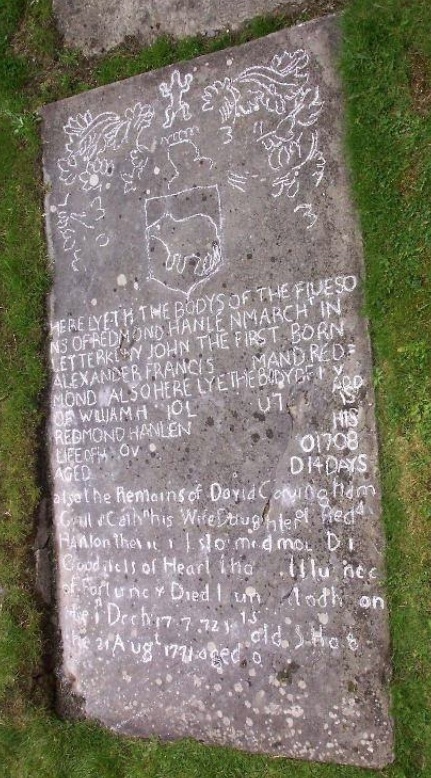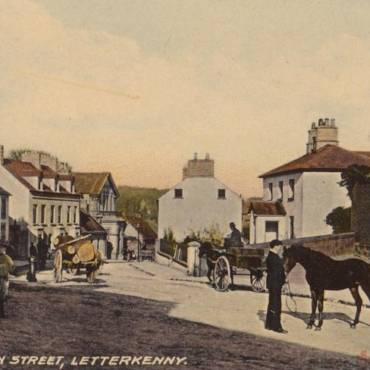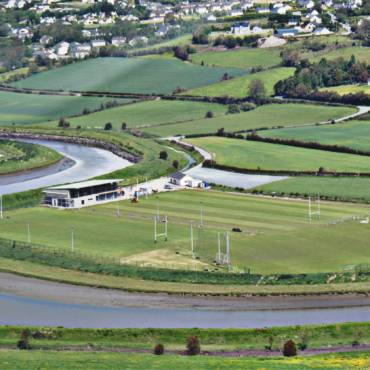Debate: Is Count Redmond O’Hanlon buried in Letterkenny?
One of the best-known graves in Conwal Parish Church is believed by many locals to be that of Count Redmond O’Hanlon, the notorious seventeenth century bandit. But does this popular local legend stand up to historical scrutiny?
Originally from County Armagh, Count Redmond O’Hanlon had fought under Eoghan Rua O’Neill at the Battle of Benburb in 1646 but rose to prominence in the late 1650s following his return from France where he had been made a Count. Operating as a lone highwayman (or rapparee) in his native territory at first, extracting ‘protection’ money from those that now lived on his former lands, other bandits soon joined him in his exploits.
His crimes soon became common news at London court as he extended his attacks into Down, Leitrim and Roscommon and, relentlessly pursued by Dublin Castle, he was eventually shot by his foster brother, Art, on April 25th1681 and was buried at Ballinabreck in Co. Down.
In his 1979 pamphlet, “Count Redmond O’Hanlon”, local historian Sam Fleming states that following a decree of 1679 which ordered the arrest of family relatives of outlaws, Count Redmond’s father, (also called Redmond), left Armagh for the safety of his family and moved to Letterkenny. This, Fleming contends, is the “Redmond Hanlen, Merchant” listed on the gravestone in the graveyard. The gravestone reads:
The five sons of Redmond Hanlen Merchant in Letterkenny:
John, the firstborn, Alexander, Francis, John and Redmond.
Also here lieth the body of William, son of the afore said Redmond Hanlen, who departed this life on the 27th…1708 aged 3 years…months and 14 days.
Also the remains of David Conyngham, Gent and Cath, his wife, daughter of Redmond Hanlen.
They were esteemed more for goodness of heart than for affluence of fortune.
Died lamented here on…December 1752, 72 years old.
She: 21stAugust 1775 aged 80
Fleming notes that the reason for Redmond Senior choosing Letterkenny at this time was that his daughter was married to David Conyngham, brother to Sir John Conyngham, who was by now the proprietor of Letterkenny Castle. This is evidenced by the names on the gravestone. According to legend, Sir John Conyngham sent an escort of swordsmen to the cemetery at Ballinabreck to exhume the body of Count Redmond and re-inter his remains in Letterkenny in the family plot, at the request of the O’Hanlons. Count Redmond’s name is underlined on the grave above. Fleming surmises from this legend that Count Redmond’s final resting place is Letterkenny, buried with his father and brothers.
However, taking the dates on the headstone into account, the numbers do not seem to add up. We know that Count Redmond fought at the Battle of Benburb in 1646 and yet according to the gravestone, he had a son William fifty-nine years later in 1705 (noted on the headstone as having died in 1708 aged 3 years)? Also, the daughter of Redmond Snr., Catherine, who married David Conyngham (and thus was the ‘reason’ for the family to move to Letterkenny in 1679), is noted on the gravestone as dying in 1775, aged 80, giving her birth as 1695 – sixteen years after the decree which allegedly forced the O’Hanlons to move to the town!
It is quite clear then that this Redmond Hanlen who is buried in Conwal Parish Church is not Count Redmond’s father, nor indeed the famous rapparee. That is not to say that they weren’t a relation of some kind – possibly cousins who fled the Armagh territory for their own safety and moved to Letterkenny for a new life.
However, there is an actual connection of the rapparee to the town, which could explain the confusion. In his youth, Count Redmond O’Hanlon worked for Sir George Acheson of Markethill in Armagh. Acheson was a grandson of Johanna Marbury, his mother being Margaret Hamilton, the daughter of Johanna and her first husband Sir John Hamilton. In fact, Archibald Acheson, George’s father, died at Letterkenny Castle in 1634. This connection to the Achesons then would have made a trip to Letterkenny at some stage very possible for Count Redmond O’Hanlon in his younger years, while owing to their links with the Achesons, perhaps other members of the wider O’Hanlon family moved to the town, changed their name to Hanlen and were then buried in the graveyard, causing the confusion.
No convincing evidence has ever surfaced linking the Hanlen grave at Conwal Parish Church with Count Redmond O’Hanlon, but that has not stopped the local legend being accepted.
What do you think? Feel free to comment below!



